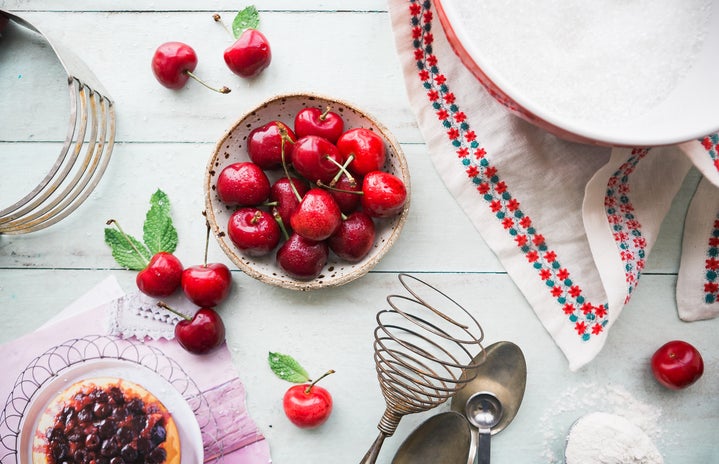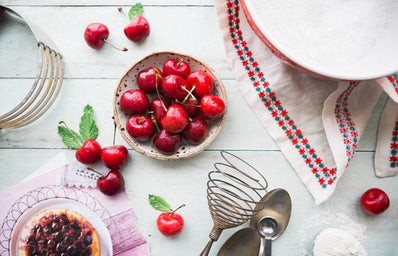I threw out a banana today.
I had forgotten about it. It was barely visible on my dorm room shelf and a week after procuring it, it had become a nasty shade of brown. Typically I try not to waste food, but needless to say this banana was no longer appealing.
With a growing population, our continuous waste of food is becoming an even bigger issue. There are many factors in this issue, but one of the main is our perception of what is actually edible.
Edibility impacts our daily intake of food, and perceptions regarding what is edible have become so narrow that they’re contributing to extensive problems such as food waste and limited resources. As a result, the way we define what is considered to be food is one of the most important areas of research for our growing world.
So what exactly is edibility? It can be defined as “the property of being fit to eat.” According to British food writer, journalist, and historian Bee Wilson, as we grow, edibility is something that is taught, and the perception of what is edible varies across cultures. We learn our perception of edibility through a concept called palatability.
Palatability is the response of pleasure or displeasure someone experiences when eating a particular food. It’s a transactional cycle. Both our culture and experiences influence the food we eat, which creates our palatability, and in turn impacts our food choices and eating experiences in the future. When we eat something inedible, that memory will then be implanted into the brain, which can influence our eating experiences, what we choose to eat in the future, and how what we eat may defy culturally specific norms.
Our experiences, culture, and our palatability not only help us to distinguish between the foods we do and don’t like, but they tell us when something is inedible. We can look to Nepal to see the concept of palatability in action.
Author and healthy living advocate Susan Allport tells us, in Nepal eating dirt is culturally acceptable. While American societies would characterize this as outside the norm, it makes sense. In fact, “in other parts of the world, entire populations [purposely] consume dirt.” Dr. David L. Katz, nutrition expert at the Yale School of Medicine explains clay contains minerals that are essential for the human diet, and, help to absorb your body’s toxins.
If other societies eating dirt doesn’t make you feel bad about the food you waste, look to the numbers instead.
Scientists at the Natural Resources Defense Council, or the NRDC, a nonprofit organization aimed at safeguarding the earth (and yes, Marshall Eriksen’s dream job), conclude that wastefulness is due, in part, to our narrow perception of edibility. According to journalist Andrew Gumbel in his 2014 article “Food Waste Around the World,” Americans now waste more than 40% of their food.
This waste equates to more than 20 pounds of food per person every month. Annually the United States wastes 763 billion pounds of food. The NRDC tells us reducing food loss by just 15%, the equivalent of 3 pounds per person every month, would feed more than 25 million Americans for a year.
The defects that trigger our rejection of food can be as simple as bent carrots, lightly bruised apples, or too small blueberries. But it isn’t only bumps and bruises that contribute to a consumer’s perception of edibility.
Researchers, farmers, and suppliers alike have discovered that the color of a food changes both our expectations of how the food will taste, and what we taste.
In a study published in The Journal of Food Science, subjects were blindfolded and given an orange flavored beverage. In the absence of a visual cue, when asked what flavor they were drinking, only one in five participants identified it correctly. But when they were allowed to see the orange color of what they were drinking, each of them correctly identified the orange flavor. And when a lime-flavored drink was colored orange, nearly half of respondents thought it was flavored orange—none did when it was colored green.
Take the iconic bright red maraschino cherry. When grown, the cherry can be a variety of types and colors, the same as what you’d find in the produce section. Maraschino cherries are then bleached to a pale yellow in a solution of calcium chloride and sulfur dioxide and then dyed their iridescent and uniform red – with a dye made from bugs (but that’s a whole other can of worms).
Our expectation of how a food appears can influence our satisfaction when eating. If we expect a food to look or smell a certain way, and it doesn’t match our expectations, we might not eat it.
Additionally, the food we toss may in fact be edible, but we are trained to look at expiration dates as the cut off for when a product is no longer safe. In reality this may not be true.
According to the NRDC and Harvard Law School’s Food Law and Policy Clinic, nearly 90% of the food Americans buy is thrown out prematurely every year due to food dating. Confusion and misinformation over date labeling leads to billions of pounds of discarded food every year.
Doctor Bob Brackett, Director of the Institute for Food Safety and Health at the Illinois Institute of Technology explains while use-by, sell-by, and best-by dates are meant to provide different guidelines, they don’t tell us if a food is expired, these labels are simply a matter of perceived quality.
Furthermore, none of these labels indicate that the food is unsafe to eat if the date on the product has passed. On February 20th, 2017 the USDA announced their attempt to clear up confusion by mashing all the labels together into “best if used by.”
Many people don’t realize the drastic impact their waste of food has, but others not only do, but are taking ingenious steps to refute the impending scarcity.
Technology continues to advance to produce products that break the barriers of edibility and drastically reduce food waste. One of the new technologies is 3D food printing. Sounds almost impossible, right? It’s not. A team of researchers at Columbia University have developed a 3D printer that will print and cook multiple edible ingredients at once.
Redefining what we see as edible, Professor Hod Lipson of Columbia University explains the beauty of these printers is that they can use unpalatable but plentiful ingredients such as algae and grass to form the basis of familiar dishes.
Lipson says, “We have a […] visceral reaction to foods we don’t recognize.” Because of this, 3D food printers are used to make the unappetizing, appetizing. Lipson comments, “There’s an […] advantage there — being able to make something that looks and tastes good from something that doesn’t.”
The food printers of tomorrow could allow customization at the macro nutritional level, letting users individualize the nutritional values in their meals and reduce chemical additives. 3D food printing has the power to transform what we see as edible in times of growing uncertainty about global food shortages.
While Lipson’s techniques have the power to create edible food, scientists have found ways to convert packaging to be consumable. Many foods come wrapped in plastic packaging, which creates a lot of non-recyclable, non-biodegradable waste, and these thin plastic films are not great at preventing spoilage.
To address these problems, research leader Dr. Peggy Tomasula and colleagues at the U.S. Department of Agriculture are developing an edible packaging film made of the milk protein casein. Because they’re derived from milk, they are biodegradable, sustainable, and edible. This casein packaging is up to 500 times better than plastics at keeping oxygen away from food, reducing food spoilage and waste. Tomasula predicts this packaging will be on store shelves within two years.
Edibility is a life sustaining factor, controlling our food choices and impacting our health. Our perception of edibility is determined through experiences, can be altered by cultural norms, and is influenced by advancements in technology.
If we are able to influence or change what we see as edible, it creates endless opportunities for new food experiences.
Want to help with food waste in La Crosse? Visit www.foodrecoverynetwork.org to learn more about the largest student movement against hunger in America.
Oh, and maybe store those bananas in places you won’t forget about them.


